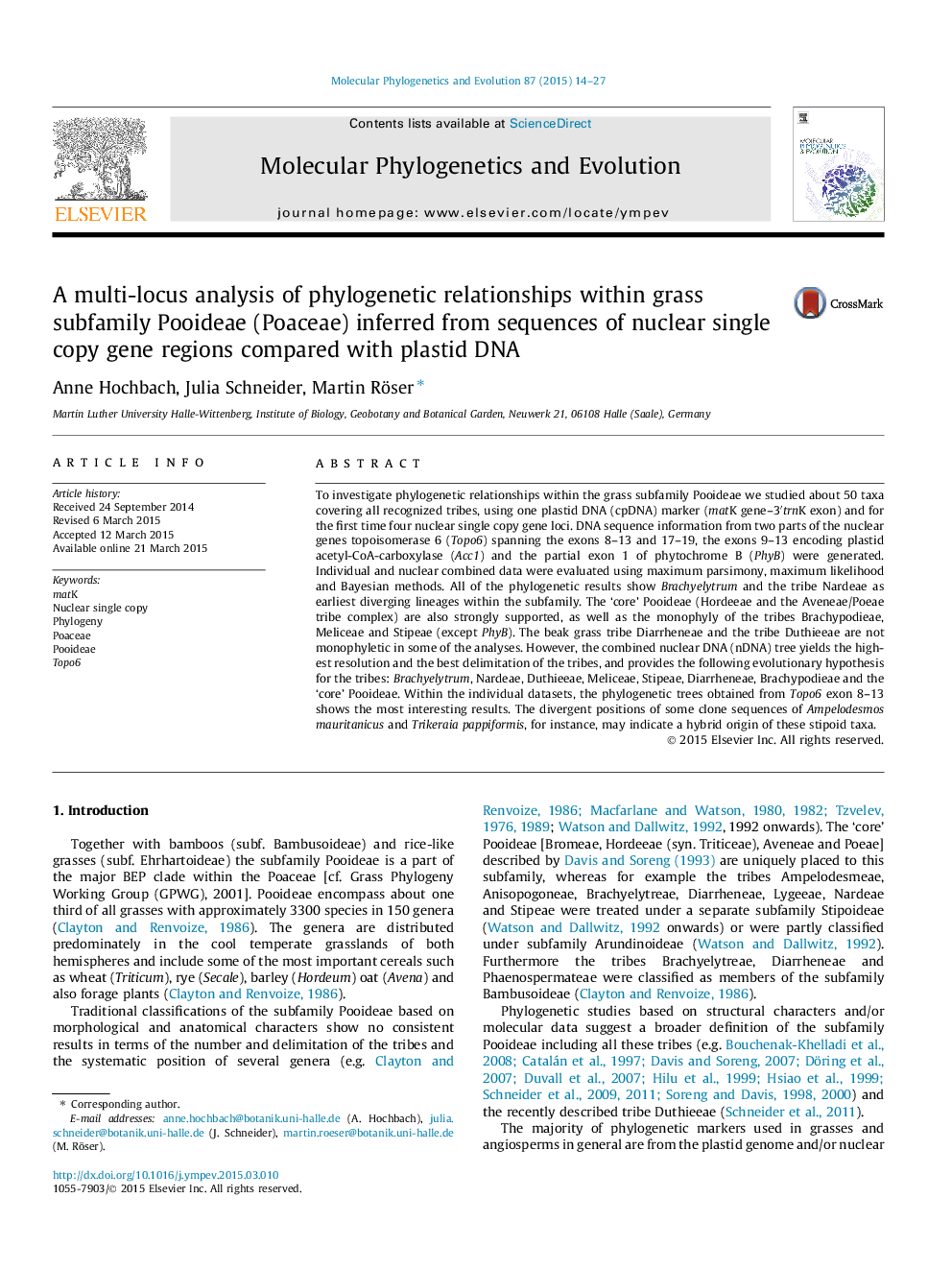| کد مقاله | کد نشریه | سال انتشار | مقاله انگلیسی | نسخه تمام متن |
|---|---|---|---|---|
| 5919121 | 1570809 | 2015 | 14 صفحه PDF | دانلود رایگان |

- The first phylogeny of grass subfamily Pooideae based on nuclear single copy loci.
- Parts of the nuclear genes Acc1, PhyB and Topo6 were used.
- The best resolved tree is obtained from combined nuclear DNA data.
- Major lineages are supported, except for tribes Diarrheneae, Duthieeae and Stipeae.
- Stipoid Ampelodesmos mauritanicus and Trikeraia pappiformis may have hybrid origin.
To investigate phylogenetic relationships within the grass subfamily Pooideae we studied about 50 taxa covering all recognized tribes, using one plastid DNA (cpDNA) marker (matK gene-3â²trnK exon) and for the first time four nuclear single copy gene loci. DNA sequence information from two parts of the nuclear genes topoisomerase 6 (Topo6) spanning the exons 8-13 and 17-19, the exons 9-13 encoding plastid acetyl-CoA-carboxylase (Acc1) and the partial exon 1 of phytochrome B (PhyB) were generated. Individual and nuclear combined data were evaluated using maximum parsimony, maximum likelihood and Bayesian methods. All of the phylogenetic results show Brachyelytrum and the tribe Nardeae as earliest diverging lineages within the subfamily. The 'core' Pooideae (Hordeeae and the Aveneae/Poeae tribe complex) are also strongly supported, as well as the monophyly of the tribes Brachypodieae, Meliceae and Stipeae (except PhyB). The beak grass tribe Diarrheneae and the tribe Duthieeae are not monophyletic in some of the analyses. However, the combined nuclear DNA (nDNA) tree yields the highest resolution and the best delimitation of the tribes, and provides the following evolutionary hypothesis for the tribes: Brachyelytrum, Nardeae, Duthieeae, Meliceae, Stipeae, Diarrheneae, Brachypodieae and the 'core' Pooideae. Within the individual datasets, the phylogenetic trees obtained from Topo6 exon 8-13 shows the most interesting results. The divergent positions of some clone sequences of Ampelodesmos mauritanicus and Trikeraia pappiformis, for instance, may indicate a hybrid origin of these stipoid taxa.
Journal: Molecular Phylogenetics and Evolution - Volume 87, June 2015, Pages 14-27